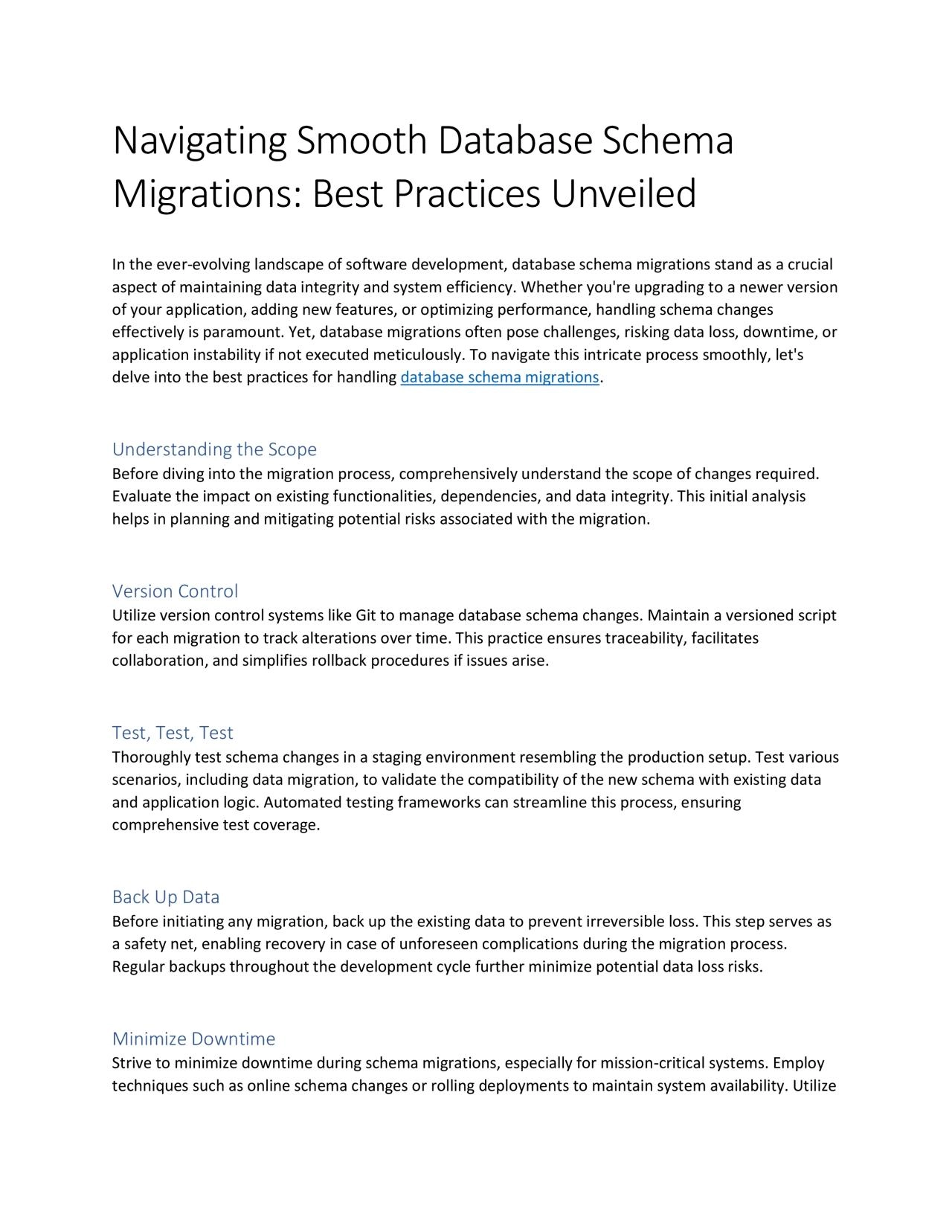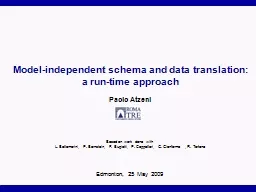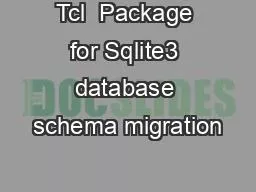PDF-Navigating Smooth Database Schema Migrations: Best Practices Unveiled
Author : BrucePoolelightning | Published Date : 2024-04-24
Dive into the world of seamless database schema migrations as we unveil best practices empowering you to navigate complex transitions with confidence and precision
Presentation Embed Code
Download Presentation
Download Presentation The PPT/PDF document "Navigating Smooth Database Schema Migrat..." is the property of its rightful owner. Permission is granted to download and print the materials on this website for personal, non-commercial use only, and to display it on your personal computer provided you do not modify the materials and that you retain all copyright notices contained in the materials. By downloading content from our website, you accept the terms of this agreement.
Navigating Smooth Database Schema Migrations: Best Practices Unveiled: Transcript
Download Rules Of Document
"Navigating Smooth Database Schema Migrations: Best Practices Unveiled"The content belongs to its owner. You may download and print it for personal use, without modification, and keep all copyright notices. By downloading, you agree to these terms.
Related Documents














